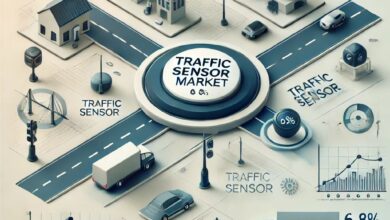Washington state’s highways ranked near the bottom in the nation

(The Center Square) – Washington state ranks 42nd in the nation in highway performance and cost-effectiveness, according to a new report from the Reason Foundation.
The yearly report measures highway performance based on 13 different categories, including urban and rural pavement condition, deficient bridges, traffic fatalities, spending per mile, and administrative costs per mile of highway.
“All 13 categories are considered together, weighted equally and then averaged to get one overall score,” the report states. “Therefore, each measure, whether spending efficiency or system performance, is weighted equally.”
Washington state’s worst rankings are in maintenance disbursements per mile (49th), administrative disbursements per mile (47th), and rural interstate pavement conditions (46th).
The state’s best rankings are in the urban fatality rate (7th), overall fatality rate (10th), and urban area congestion (10th).
Motorists in Seattle may be surprised to learn that Seattle is the only 14th worst congested places to drive in the U.S., according to the 2019 Global Traffic Scorecard from Kirkland-based traffic and technology data company INRIX and that the state 10th place ranking in urbanized area congestion. That translates to drivers spending 5.65 hours a year stuck in traffic.
Washington state’s 49th place ranking in maintenance disbursements – the costs of routine upkeep like filling potholes and repaving roads – stands out.
The report notes Washington state spends $56,847 per mile of state-controlled road, which is nearly four times the $15,875 spent by its neighbor to the south, Oregon.
Administrative disbursements show a similar pattern, with Washington state spending $16,219 per mile of state-controlled road, which is almost double the $8,703 Oregon spends, according to the report.
Washington state’s overall 42nd ranking stands in contrast to Oregon’s 25th ranking and fellow neighboring state Idaho’s No. 8 position on the list.
“To improve in the rankings, Washington should try to have its high costs better translate into good pavement condition. For example, the state is in the bottom 10 in spending in all four disbursement categories but still ranks in the bottom 10 in both rural Interstate and urban arterial pavement condition,” said Baruch Feigenbaum, lead author of the study and director of transportation policy at Reason Foundation, in the individualized report for Washington state. “While it may be challenging for Washington to reduce its spending, if the state could improve its pavement quality to the national average, it would move up in the overall rankings. As is, the state has the worst of both worlds: high spending and poor roadways.”
There is nothing like geography and population that makes roads in Washington state inherently bad, Feigenbaum told The Center Square.
“There’s nothing that jumps out at you,” he said, suggesting Washington State Department of Transportation (WSDOT) officials get in touch with transportation officials in peer states like Oregon and Colorado to find out how it is they are not spending as much money as Washington but getting better results. “It should not be that complicated.”
Feigenbaum speculated that perhaps state government doesn’t maintain roads frequently enough, resulting in higher costs later on.
Mariya Frost, director of the Coles Transportation Center at the Washington Policy Center, offered a blunt assessment in an email of what the report had to say about Washington state’s highways.
“Before lawmakers give the Washington State Department of Transportation (WSDOT) additional tax dollars to manage and spend, they should consider the data and analysis provided in Reason’s report that shows Washington spends disproportionately high amounts for poor roadways,” she said.
Frost noted, “Lawmakers should take this to heart as they head into the 2022 legislative session, since this appears to reflect poor management at WSDOT.”
Still, Washington state drivers can take some solace in the fact the Evergreen State’s overall highway performance puts it ahead of 45th-ranked California.
Washington state’s 42nd ranking represents a three-spot jump from last year.
Disclaimer: This content is distributed by The Center Square

